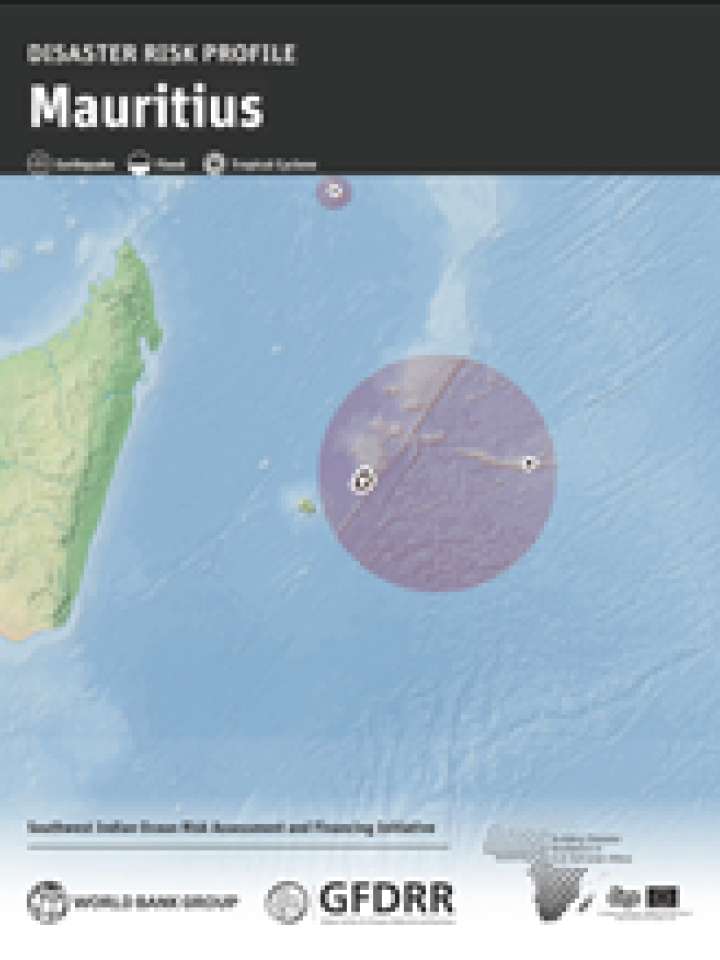Disaster risk profile: Mauritius
This disaster risk profile for Mauritius seeks to provide a basis for the future implementation of disaster risk financing through the improved understanding of disaster risks. The risk modelling undertaken focused on three perils: tropical cyclones, floods and earthquakes. In addition, as part of the earthquake risk assessment, tsunami risk zones were also identified. The hazard and exposure data, as well as the results of the risk analysis, has been collated and stored on open data geospatial platforms in the country and made available to a wide range of end-users.
This analysis suggests that, on average, Mauritius experiences over US$110 million in combined direct losses from earthquakes. floods. and tropical cyclones each year. However, a specific event such as a severe tropical cyclone can produce significantly larger losses. For example, results suggest that a 100-year return period tropical cyclone event could produce direct losses of $1.9 billion and require approximately $430 million in emergency costs.
Tropical cyclones are by far the most significant risk in the study, causing approximately 80 percent of the average loss per year from all three perils. Flooding is the next largest risk, accounting for nearly 20 percent.
In this analysis the residential sector experiences over 50 percent of the combined losses, the commercial sector over 25 percent, and industry over 10 percent. The highest loss takes place on Mauritius's Main Isla nd, which experiences nearly 90 percent of the average annual losses from the three perils combined, with the remaining losses occurring on Rodrigues. In addition to the direct losses, an annual average of nearly $26 million is estimated for emergency costs.
Explore further
